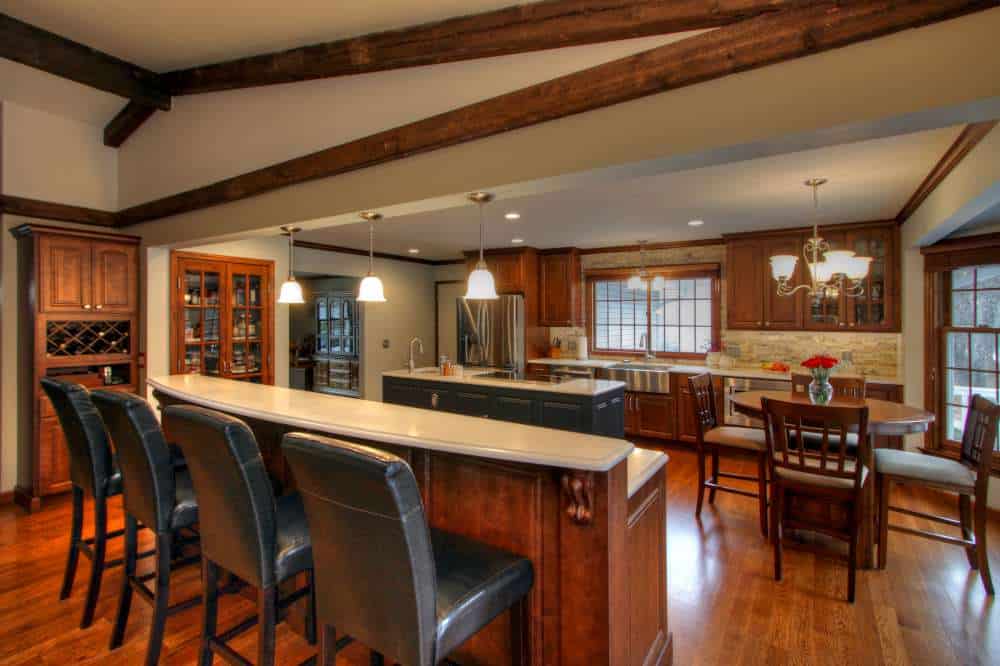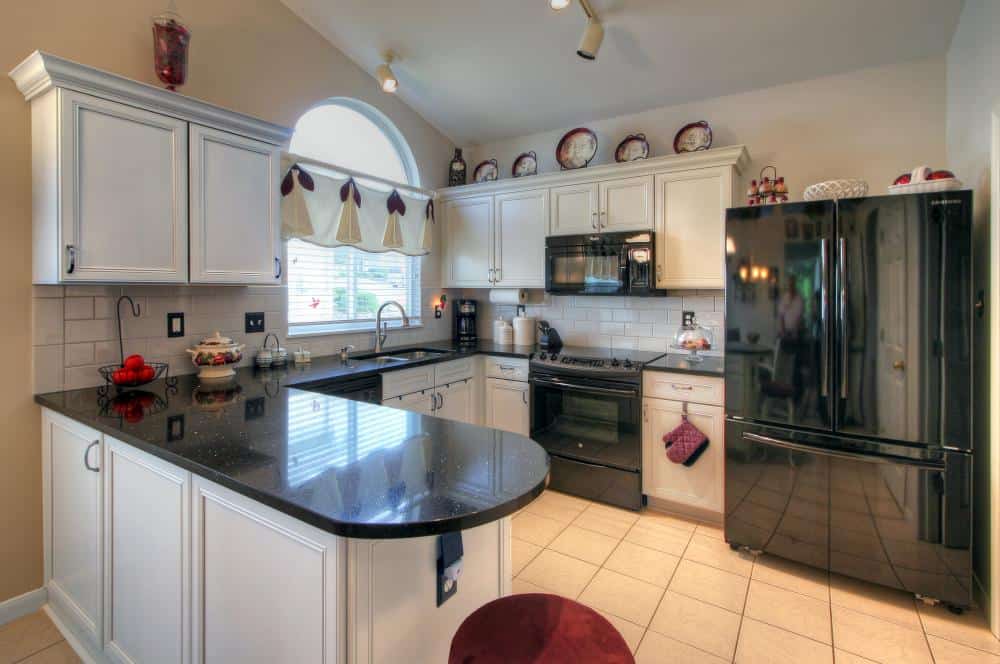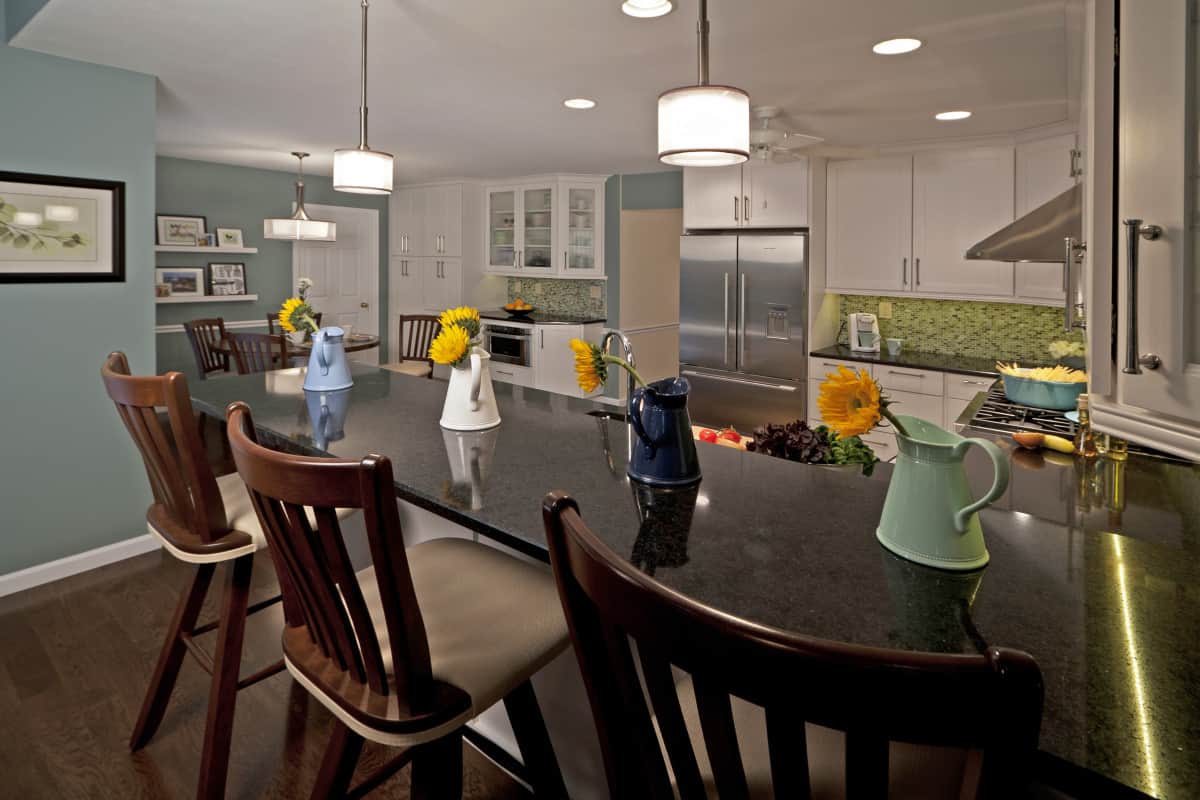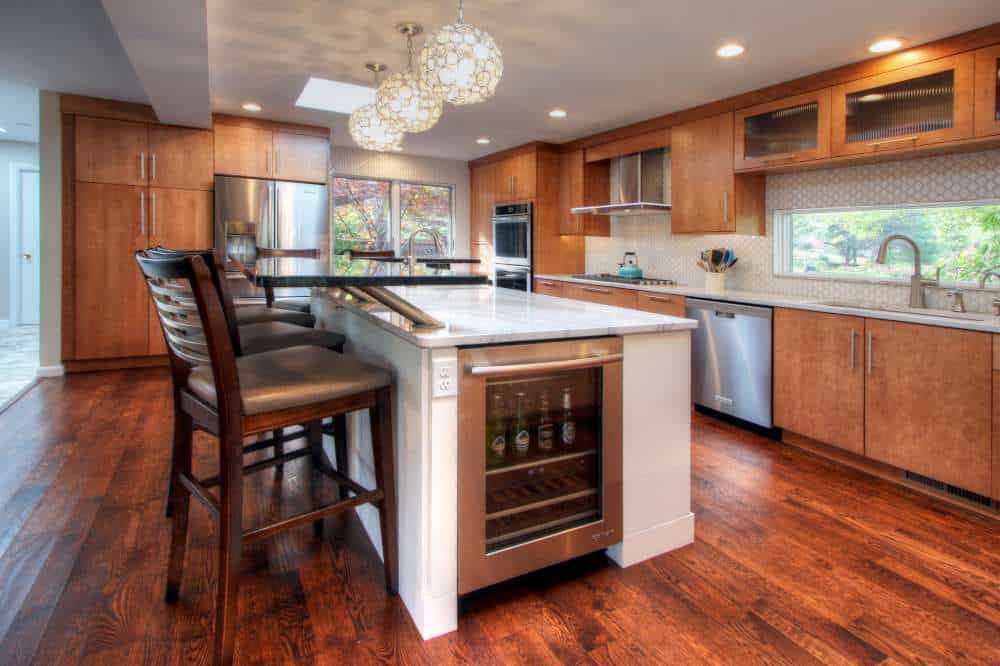In many ways the kitchen is the new living room! Often referred to as the “heart of the home,” the kitchen is no longer just a place to prepare food and eat. It’s a popular spot for family gatherings, bonding, working, and more. In order to enjoy all your kitchen has to offer, the design and layout must be right.

If you’re looking for a way to add storage, seating, extra work/prep space and/or more room to hang out with friends, consider adding either an island or peninsula. How you live and what you plan on using your kitchen space for can be a deciding factor between the two. With the addition of an island, there must be ample space to pass by on all sides, while keeping the triangle area, the space between the fridge, sink, and cooking area, open.
Island vs. Peninsula: What’s the Difference?
So, what really distinguishes an island from a peninsula? Both are named after the geographical features they align with; an island is a free-standing space with four open sides, while a peninsula has one end attached to a wall or other structure, with three open sides. Basically, a peninsula is seen as an extension of the rest of the kitchen, while an island is a distinct unit that stands on its own. The real decision between the two is essentially based on two elements: available space and livability.

Space/Layout
An island or peninsula has the potential to both enhance and dominate the space in your kitchen. As a rule, if your kitchen is less than 13 feet wide, building professionals don’t recommend adding an island. If space is in abundance, islands are more fitting by breaking up a large area without sectioning it off. If you plan on doing a lot of entertaining in your kitchen, the island counter is a better choice, as it lets the cook remain part of the action while preparing food. The biggest advantages from the island are extra seating, more functionality with place for added amenities, like a microwave or sink, plus accessible cabinets.
Often, however, an island isn’t a viable layout for the space you’re working with. Luckily, the peninsula can offer similar benefits, creating a border between the living space and the cooking space, and allowing the cook to have some privacy. A peninsula lends itself particularly well to U and L-shaped kitchen layouts, that have limited space. As an alternative, some people choose a rolling cart which allows the homeowner to adjust the layout accordingly.
Design
An island affords the homeowner two design choices. One is to match the style and construction of the rest of the kitchen to create a unified look. This will result in the same counter tops, woodwork, and other design details. The other option is to use the island as a contrasting piece in the kitchen, choosing a different color and design scheme from the rest of the room or one that will transition into the next room in the open floor plan. Either way, the island can become a showstopper in your kitchen!

A peninsula, on the other hand, will most likely be designed to blend with the existing cabinet space to create a unified appearance. If the other counter tops are natural stone, particularly marble, matching them will be difficult and probably require the replacement of all the counter tops. For these reasons, a peninsula limits the design choices.
Budget
Planning, organization and cost should also be factored in when considering changing the space or layout. Whilst islands are ideal for circulating, the area will need a supply of gas, electricity and water, which will mean running cables, pipes and wires underneath the flooring. This may prove more costly, so it is essential to ensure your budget can accommodate this.

Installation
In many ways, the installation of a kitchen island and peninsula are the same, and both should be done by professionals. At the least, the services of a carpenter and counter top installer are needed. If a sink or appliances are to be added, then a plumber and electrician need to be involved as well.

Seating
When you decide where to seat people in an island, make sure you have enough space to walk behind them. Also ensure that there is enough leg room, so people won’t end up knocking their knees on the back wall of the island! In addition, consider whether the dimensions allow for suitable depth drawers and cupboards to house everything you want to store in there?
There are pros and cons to both the island and peninsula and really comes down to your personal tastes. Call Mosby today at 314.909.1800 and we’d be happy to help you design the kitchen that best suits you and your family.



